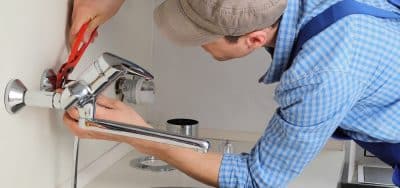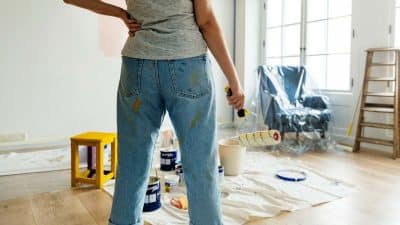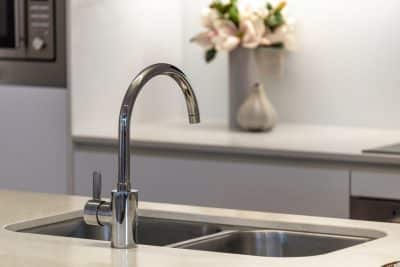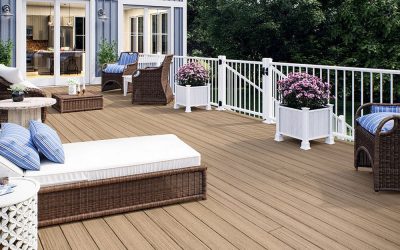
There are many benefits to doing simple plumbing tasks without the assistance of a professional. It can save money by avoiding costly service fees. It’s an opportunity to be self-reliant and can provide a sense of accomplishment and satisfaction.
Handling these repairs will resolve minor issues promptly, save time by not waiting for a professional to arrive, and help you better understand your home’s plumbing system.
There are many ways where you can do plumbing tasks to fatten savings.
Some Easy To Do-It-Yourself Plumbing tasks
1. Fixing A Leaky Faucet
Whether your plumbing system has a state-of-the-art design, it will eventually have problems, like a leaky faucet. But there’s no need to hire a pro at this. You can do it yourself.
Fixing leaky faucets are relatively easy tasks that can be done without professional assistance. It’s also one of the best ways to avoid water damage in your home. It typically involves replacing a worn-out washer or cartridge inside the faucet. The process generally requires basic tools like a wrench and screwdriver.
Basic steps like loosening and cleaning faucet joints, then tightening them with plumbing tapes and sealants, usually makes your fixing job easier like a pro. You can find many tutorials and DIY videos to help you fix leaky faucets and save your money for professional fees.
You can save water and reduce utility bills by attending to leaky faucets and other water leak problems. It’s a satisfying DIY project that doesn’t require advanced plumbing knowledge, making it accessible to homeowners of varying skill levels.
2. Unclogging Drains
Unclogging the drain is a task that can often be tackled without professional help. It is relatively easy because various tools, such as plungers and drain snakes, are available in most hardware and home improvement stores. Minor clogs can usually be cleared with a plunger’s suction or by manually removing debris with a snake.
Plus, if you plan on making it a small-time business, you can easily get plumbing leads to help you out. There are many online resources and tutorials to help and guide you.
For tougher clogs, you can use chemical drain cleaners. But they’re used only with extreme caution and using the right cleaning gear.
Unclogging drains by yourself saves money and time by avoiding the need for a professional plumber. Also, regular maintenance and preventive measures can help prevent future clogs.
3. Installing Faucets And Showerheads
Installing a new showerhead or faucet is a straightforward task that can be easily done without professional assistance. It typically involves simple steps and basic tools like pliers or wrenches.
Many showerheads and faucets come with clear instructions, making the process even easier. It allows homeowners to upgrade their fixtures, improve water efficiency, and enhance the aesthetics of their bathrooms.
With proper preparation and turning off the water supply, installing a new shower head or faucet is a DIY project that can be accomplished with minimal effort and basic plumbing knowledge.
4. Replacing Toilet Components
Replacing toilet components is a relatively easy task that can be done without professional help.
Common issues like a running toilet or a faulty flush valve can often be resolved by replacing the flapper or fill valve. These components can be easily found at hardware stores and come with instructions. The process typically involves turning off the water supply, removing the old part, and installing the new one.
Replacing toilet components saves water, prevents leaks, and restores proper flushing functionality. It is a cost-effective and accessible DIY solution for most toilet-related problems.
5. DIY Caulking
Caulking may seem like a mundane task, but it holds hidden powers! With a simple tube of caulk and a steady hand, you can transform your bathroom or kitchen into a fortress against water leaks. Caulking is a breeze because it’s as simple as squeezing the caulk along cracks and gaps to create a watertight seal.
It’s like wielding a magic wand, banishing water invaders. By sealing these gaps, you prevent water damage and mold growth. Plus, with various caulking products, you can unleash your creativity, giving your space a fresh, polished look.
6. Fixing A Running Toilet
Fixing a running toilet is totally doable without calling a pro. You can start by removing the tank lid and checking the flapper. Replace it with a new one if it’s already worn or not sealing properly. Otherwise, it will allow water to flow freely and increase your water consumption for as long as it’s not fixed.
Next, check the fill valve and adjust the float. If it’s too high, bend the rod to lower it. Finally, check the chain connecting the flush handle to the flapper. Make sure it’s not too tight or too loose. That’s it! You’ve saved the day and stopped that pesky running toilet yourself.
Bottom Line
Skills may make you feel you lack the basics to do some plumbing at home. But with these insights, you can help prevent common plumbing issues from bothering your many tasks at home. A little attitude will go a long way. Go for it!








